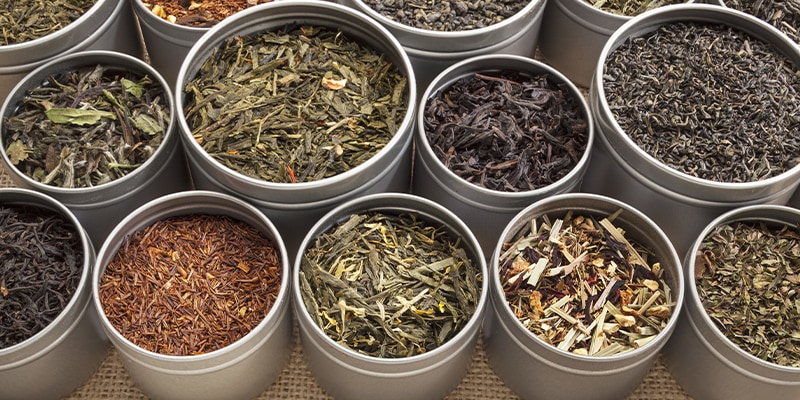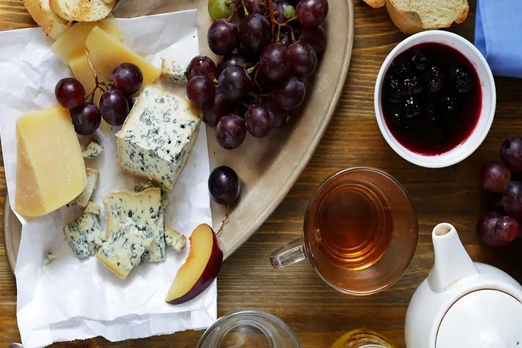The volcanic soil of Hawaii: a paradise for tea
A new emerging terroir to keep an eye on with interest is located in the middle of the Pacific Ocean, in Hawaii. Let’s discover it together!

Tea, as we know, is primarily cultivated in Asia: China, Taiwan, India, Japan, and Sri Lanka, to name a few, are the main tea-producing countries globally. In these regions, the perfect balance of optimal climate, traditions, and culture has allowed the tea industry to thrive for centuries. Alongside these traditional producers, a new emerging terroir worth monitoring is located in the middle of the Pacific Ocean: Hawaii.
These islands are establishing themselves as an extraordinary, trendy, and unconventional place for tea cultivation.
This archipelago consists of eight islands: Oahu, Maui, Kauai, Molokai, Lanai, Kahoolawe, Niihau, and Hawaii Island (the Big Island). Particularly on Big Island, Maui, and Kauai, the fertile, acidic, and well-drained volcanic soils, combined with altitude and humidity levels ranging from 75% to 90%, create optimal ecosystems for cultivating various tea varieties. The heart of Hawaii’s tea-growing industry is on Big Island, especially on the eastern side near Hilo.
A BIT OF HISTORY
Tea plants were first introduced to Hawaii around 1887, with the hope that they would become a widespread and profitable crop, similar to pineapple and sugarcane. However, repeated attempts to commercialize tea production on Kauai and in the Kona region of Big Island failed due to unsustainable and prohibitively high costs compared to the more competitive prices of major tea-producing countries.
This remained the case until the 1980s, when a new generation of farmers revisited the idea of cultivating tea on a commercial scale.
THE IMPORTANCE OF SCIENTIFIC RESEARCH
In recent decades, the College of Tropical Agriculture and Human Resources at the University of Hawaii has contributed significantly to research and the identification of the most suitable cultivars. Thanks to this critical support, a dozen small plantations have been established in less than thirty years, with a few consistently producing small batches of high-quality tea.
Through preliminary observations and tests conducted by the research institute, three clones have been identified as best suited to the unique Hawaiian microclimate:
Bohea
This vigorous plant, native to the Wuyi Mountains (Fujian, China), is compact with small, slightly oval leaves. It has good resistance to pest attacks and is relatively easy to propagate through cuttings. Bohea is suitable for processing into wulong tea (>65% oxidation, from plants grown at high altitudes) or black tea (grown at lower altitudes).
Yabukita
This Japanese cultivar is the top choice for producing green tea and low-oxidation wulong tea. It thrives in drier soils and at altitudes above 1,500 meters. The plant has elongated, serrated leaves, long internodes, and a vertical growth habit.
Yutakamidori
Another Japanese cultivar, Yutakamidori, is ideal for green tea production, offering a delicate and sweet flavor profile. It is well-suited to altitudes above 1,500 meters and relatively dry climates. The plant features long internodes, high yields, and is relatively easy to propagate through cuttings.
Currently, additional clones are being experimented with, and promising candidates will soon be tested in the field.

TASTING NOTES
Hawaiian tea stands out for two main reasons. First, because all tea is essentially grown on volcanic soil, the leaves develop a unique and distinct flavor and aromatic profile. In the cup, the liquor is bright and clear, offering citrusy notes and a subtle sweetness reminiscent of honey.
Moreover, true to the alternative and hippie spirit that defines Hawaii, each garden has its own cultivation methods and production style. As a new tea-producing region without a deeply rooted tea culture, farmers are not bound by specific types or methods of processing and are therefore free to experiment.
The farms are often small, family-run operations that cultivate high-quality tea using sustainable agricultural practices. Tea leaves are hand-picked, and processing varies, often blending traditional techniques with innovative approaches. Among the tea families available on the market are green tea, black tea, and wulong-style teas. Each variety boasts unique characteristics and a persistence that can range from delicate and floral to robust and slightly earthy.

THE MAIN TEA PLANTATIONS
There are around a dozen tea-producing farms in Hawaii.
On Hawaii Island (or Big Island), one of the most notable is Big Island Tea, founded in 2001 by Eliah Halpenny and Cam Muir.
This family-run farm is located in the lush forest on the northeastern slopes of Mauna Loa volcano. Harvesting and processing are entirely manual, with no pesticides used. Eliah and Cam have also collaborated with a cooperative of small-scale farmers to support the development of the local community.
Among their small-batch teas, highlights include black tea with intense citrus, cherry, and caramel aromas, and pan-fired green tea, which is fresher and lighter with floral, vegetal, and slightly citrusy notes.
Eva Lee and Chiu Leong manage Tea Hawaii & Company, a small paradise hidden in the rainforest. They produce:
- Forest White: A sweet and floral white tea naturally shaded by ohia trees and ferns, which grow harmoniously alongside the Camellia Sinensis plants.
- Volcano Green: A green tea featuring typical vegetal and roasted notes from pan-firing, enhanced by an exotic touch characteristic of this terroir.
- Mauka Oolong: Smooth with papaya and honey notes.
- Makai Black: Produced in collaboration with John Cross, another pioneering tea grower.
In the 1980s, Cross, previously engaged in sugarcane production, was tasked with identifying new crops to repurpose farmland. This led him to plant two varieties of Camellia Sinensis and Assamica on the slopes of Mauna Kea, along the eastern coast of Hāmākua.
The Makai Black (“facing the sea”), made by Cross in partnership with Tea Hawaii & Company, is a handcrafted black tea. Its leaves, a blend of Camellia Sinensis and Assamica, yield a clear amber liquor. The tea’s flavor profile is smooth and refined, without astringency or bitterness. It has a medium body and offers delicate aromas of caramel, malt, chocolate, and a subtle roasted sweet potato flavor. The tea’s name evokes an image of vibrant emerald-green bushes set against the sparkling azure waters of the Hawaiian coast.
On the island of Maui, we find Maui Tea Farm.

A SMALL GARDEN OF EDEN
In addition to cultivating tea and medicinal herbs for tisanes, the owners of Maui Tea Farm, Alex and Andrea de Roode, have planted a variety of fruit trees and vegetables, including oranges, mandarins, lemons, apples, pears, lychees, avocados, olives, blueberries, pumpkins, cabbages, potatoes, radishes, and arugula. The aromas from these fruits and vegetables naturally influence the small batches of Haleakalā black tea, which has won numerous international awards.
Haleakalā means “house of the sun” in Hawaiian and is the name of the dormant volcano in East Maui where the Camellia Sinensis plants grow. The local flora and the mineral-rich soil, enriched by historic volcanic flows, give this tea notes of apricot, caramel, and honey, complemented by soft tannins and delicate salty undertones.
Although not a direct producer and based in the United States, Tealet is a company that connects many Hawaiian micro tea growers with North American and global consumers through an online sales platform. Tealet’s network includes family-run farms and independent cooperatives across eight countries and 15 tea-growing regions, all committed to their craft and communities. Through videos and detailed information, consumers can truly follow the production process from field to cup, Hawaiian tea included.
Returning to the Hawaiian archipelago, the high cost of labor, an almost holistic cultivation approach, and the small parcels of land lovingly tended by farmers striving to create a uniquely Hawaiian tea style ensure that the focus remains on limited, high-quality production. All that’s missing is Tom Selleck, and the Magnum P.I. tea is served!
Ready to join the Vinhood family?
Vinhood is the First Italian Taste Agency. We explore the world of taste to guide people about how to choose and consume products and supporting companies in nurturing personalized relationships with their customers.
Read more
- Tea time and food pairings
 In restaurants, the idea of serving tea paired with the menu is no longer so uncommon. In fact, many chefs, in collaboration with tea sommeliers, are exploring new sensory and taste horizons. Let’s look at the best ways to pair it!
In restaurants, the idea of serving tea paired with the menu is no longer so uncommon. In fact, many chefs, in collaboration with tea sommeliers, are exploring new sensory and taste horizons. Let’s look at the best ways to pair it! - The colors of tea-part 2
 Terroir, cultivar, raccolti. E poi denominazioni geografiche, processi di produzione tramandati da generazioni. Vino? No, tè: un’unica pianta millenaria, quella della Camellia Sinensis, che genera una bevanda dai mille sapori e dai sei colori. Il tè viene, infatti, classificato in sei macro-categorie, paragonabili in Occidente alla distinzione tra vini rossi, bianchi e rosati.
Terroir, cultivar, raccolti. E poi denominazioni geografiche, processi di produzione tramandati da generazioni. Vino? No, tè: un’unica pianta millenaria, quella della Camellia Sinensis, che genera una bevanda dai mille sapori e dai sei colori. Il tè viene, infatti, classificato in sei macro-categorie, paragonabili in Occidente alla distinzione tra vini rossi, bianchi e rosati. - La capitale europea del tè nelle isole Azzorre
 Le isole Azzorre sono famose per la loro bellezza naturale mozzafiato, i trekking e il cibo delizioso. Il tè, anche se viene coltivato da quasi 200 anni, rimane per tanti un piccolo tesoro ancora ben custodito.
Le isole Azzorre sono famose per la loro bellezza naturale mozzafiato, i trekking e il cibo delizioso. Il tè, anche se viene coltivato da quasi 200 anni, rimane per tanti un piccolo tesoro ancora ben custodito.

